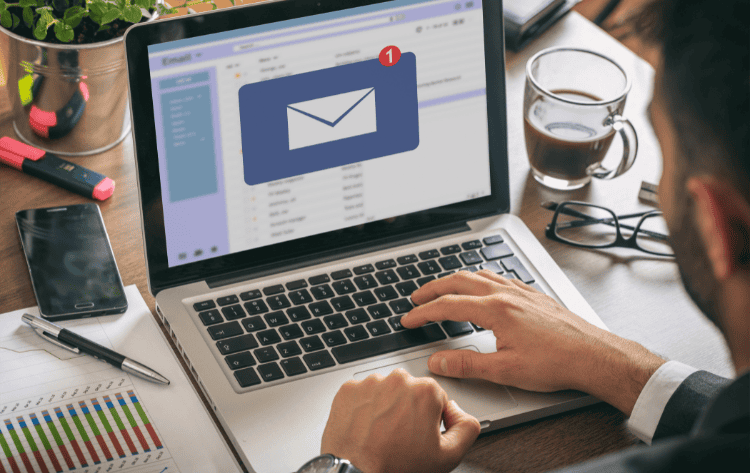In the modern digital landscape, safeguarding the security and authenticity of emails is vital for successful communication. Email authentication protocols play a key role in confirming the identity of email senders, which helps prevent unauthorized access to inboxes and protects confidential information. This discussion will explore the importance of email authentication and take a closer look at its three primary protocols.
Importance of Email Authentication
Email authentication is crucial for businesses and individuals alike. It helps protect against email spoofing, phishing attacks, and other forms of email fraud. By implementing email authentication protocols, organizations can establish trust with their recipients and reduce the risk of falling victim to email-based scams.
Email authentication also enhances deliverability rates and helps prevent legitimate emails from being marked as spam. When email servers receive messages with proper authentication, they can verify the source and determine if the email is legitimate. This verification process contributes to maintaining the integrity of the email ecosystem and ensures that important messages reach their intended recipients.

SPF (Sender Policy Framework)
Email authentication protocols are essential for ensuring the legitimacy of email communications, and one of the widely used methods is SPF, which stands for Sender Policy Framework. SPF verifies the authenticity of the sender's email address by checking whether the email originates from an authorized server. This process helps prevent spoofing and enhances the overall security of email systems.
How SPF Works
SPF works by allowing domain owners to specify which servers are authorized to send emails on their behalf. When an email is received, the recipient's mail server checks the SPF record published in the DNS (Domain Name System) for the sender's domain. This record contains a list of authorized IP addresses or hostnames that are permitted to send emails on behalf of the domain.
If the sender's IP address matches one of the authorized addresses listed in the SPF record, the email passes the SPF check and is considered authentic. However, if the IP address is not listed or does not match any authorized addresses, the email fails the SPF check, indicating a potential spoofed or fraudulent email.
Implementing and configuring SPF requires updating the DNS records for the domain. The SPF record contains specific syntax that defines the authorized servers and actions to be taken if an email fails the SPF check. It is crucial to ensure that the SPF record is accurate and up-to-date to prevent legitimate emails from being marked as spam or rejected.
Implementation and Configuration
To implement SPF for your domain, follow these steps:
- Identify the authorized email servers that send emails on behalf of your domain.
- Create an SPF record in the DNS for your domain. The record should include the authorized IP addresses or hostnames.
- Configure the SPF record to define the actions to be taken if an email fails the SPF check. This can include marking the email as spam, rejecting it, or taking other appropriate measures.
- Publish the updated SPF record in the DNS.
It's worth noting that SPF alone does not guarantee the complete elimination of spam or phishing emails. However, it significantly reduces the chances of fraudulent emails from unauthorized sources. It is recommended to combine SPF with other email authentication protocols like DKIM and DMARC for enhanced email security.
Implementing SPF and regularly monitoring and updating authentication protocols can significantly enhance email security for businesses, protecting them against phishing attacks and email spoofing. These proactive measures help ensure that only authorized senders can send emails on behalf of the organization, reducing the risk of unauthorized access and fraudulent activities.
DKIM (DomainKeys Identified Mail)
DKIM, short for DomainKeys Identified Mail, is an email authentication protocol that helps verify the authenticity of the sender and integrity of the email content. By attaching a digital signature to outgoing emails, DKIM allows the recipient's email server to validate that the message has not been tampered with during transit and that it indeed originated from the claimed domain.
How DKIM Works
DKIM works by using public-key cryptography to verify the authenticity of an email. Here's a simplified overview of the DKIM process:
- The sending mail server generates a pair of cryptographic keys: a private key and a public key.
- The private key remains securely stored on the mail server, while the public key is published in the Domain Name System (DNS) records of the sender's domain.
- When an email is sent, the sending mail server adds a digital signature to the email header using the private key.
- The recipient's mail server, upon receiving the email, retrieves the public key from the sender's DNS records.
- The recipient's mail server uses the public key to verify the digital signature in the email header.
- If the signature is valid and the email has not been modified in transit, the recipient's mail server can trust the authenticity of the email.
The DKIM digital signature is calculated using a specific algorithm, such as RSA or SHA, which ensures the security and integrity of the signature.
Setting Up DKIM Signatures
To set up DKIM signatures for your domain, follow these general steps:
- Generate a DKIM key pair: Use a DKIM key generation tool or your email service provider's interface to create a private key and a corresponding public key.
- Publish the public key in DNS: Add a DKIM TXT record to your domain's DNS records, including the public key. This allows recipient mail servers to retrieve and verify the public key when receiving your emails.
- Configure your email server: Configure your email server or email service provider to sign outgoing emails with the private key and attach the DKIM signature to the email header.
It's essential to ensure that the DKIM private key remains secure and accessible only to authorized personnel. Regularly rotating the DKIM keys and monitoring the DKIM implementation are also recommended security practices.
Implementing DKIM enhances the authenticity and integrity of outgoing emails, significantly reducing the risk of email spoofing and phishing attacks. However, it's important to remember that DKIM is only one component of email authentication. It is typically used alongside other protocols like SPF and DMARC to provide comprehensive email security.

DMARC (Domain-based Message Authentication, Reporting, and Conformance)
To further enhance email security, businesses can implement DMARC (Domain-based Message Authentication, Reporting, and Conformance) protocols. DMARC is an email authentication protocol that works in conjunction with SPF and DKIM to provide an extra layer of protection against email spoofing and phishing attacks.
Understanding DMARC
DMARC allows email senders to specify how the receiving mail servers should handle messages that fail SPF and DKIM authentication checks. It helps prevent cybercriminals from impersonating legitimate email senders and ensures that only authenticated emails reach the recipients' inboxes.
An email sent triggers the recipient's mail server to check for DMARC policies established by the sender's domain. These policies outline the actions that the recipient's server should take if the email fails SPF or DKIM authentication. Depending on the policy settings, the server may reject the email, quarantine it, or permit its delivery with a warning.
DMARC also provides reporting capabilities, allowing domain owners to receive feedback on email authentication results. These reports provide valuable insights into email traffic, including information on authentication failures, successful authentications, and potential abuse attempts.
Configuring DMARC Policies
Configuring DMARC policies involves adding a DMARC record to the Domain Name System (DNS) for the sending domain. This record specifies the DMARC policy mode, which can be set to "none," "quarantine," or "reject." It also includes an email address where DMARC reports should be sent.
| Policy Mode | Description |
| none | No specific action is taken. This mode is useful for monitoring and collecting DMARC reports without impacting email delivery. |
| quarantine | Suspicious emails that fail authentication are sent to the recipient's spam or quarantine folder. |
| reject | Emails that fail authentication are rejected and not delivered to the recipient's inbox. |
To configure DMARC policies effectively, consider the following best practices:
- Gradual Implementation: Start with a "none" policy to monitor the impact on legitimate email traffic and identify any issues. Once confident, gradually transition to a more stringent policy.
- Alignment with SPF and DKIM: Ensure that the DMARC record aligns with the SPF and DKIM settings for your domain. Consistency across these authentication protocols enhances email deliverability and security.
- Monitor DMARC Reports: Regularly review the DMARC reports to identify any patterns of abuse or unauthorized use of your domain. These reports provide valuable insights into the effectiveness of your email authentication setup.
Implementing DMARC policies helps businesses reinforce their email authentication measures and safeguard their domain reputation. Alongside SPF and DKIM, DMARC creates a formidable trio of protocols that effectively combat email spoofing and phishing attempts, ensuring a safer and more secure email environment.
Implement Email Authentication Protocols Today
LK Tech, a Cincinnati-based IT services company, excels in deploying these essential protocols to fortify your email security. Our dedicated team combines industry expertise with cutting-edge technology to ensure that your email communications are secure from potential threats.
We focus on providing customized solutions that align with your specific needs, helping you maintain the integrity and confidentiality of your sensitive information. Explore how our tailored solutions can enhance your email protection—reach out to us today and see the difference expert implementation can make.


